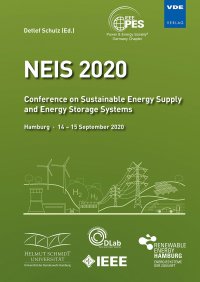Optimal Placement and Dimensioning of Reactive Power Sources to Maximize the Transfer Capacity in Transmission Networks Maintaining Static Voltage Stability
Konferenz: NEIS 2020 - Conference on Sustainable Energy Supply and Energy Storage Systems
14.09.2020 - 15.09.2020 in Hamburg, Deutschland
Tagungsband: NEIS 2020
Seiten: 6Sprache: EnglischTyp: PDF
Autoren:
Sager, Bader; Vennegeerts, Hendrik (University of Duisburg-Essen, Duisburg, Germany)
Inhalt:
The share of renewable energy resources (RES) has increased intensely over the last two decades. The power injection from RES is stochastic and as the share of RES continues to increase, the operating point of conventional power plants will change over a wide margin, and availability of less reactive power for voltage control in the network is expected. This will affect the static voltage stability of the system. At or even around the stability limit, the so-called collapse point, the Newton Raphson power flow (NRPF) might not converge. However, for the planning of alternative reactive power sources or the determination of the distance to the stability limit (stability margin) in both network planning and operation, power flow solutions are required. Even methods to derive solutions around the collapse point like continuation power flow (CPF) start from the known NRPF solution, from which predefined deflection direction is followed. For optimal placement and dimensioning of reactive power sources, power flow calculation is usually only applied for evaluation, while the optimization method used to determine the network use case under investigation, which in turn is defined as a planning target as regards the active power transmission. This motivates the introduction of a new NRPF-method based on a virtually new bus type in this paper. This new method enables us to determine a more accurate index to depict the voltage stability margin. The ability of the proposed method is proved by a case study to verify the convergence of the extended power flow solution as well as the ability to fast find the collapse point and as part of an optimization method for placement and dimensioning of reactive power sources.


